Wool Rugs
Persian Wool Rugs
We will cover the history of Persian wool rugs, their benefits, the production process, the different types and designs, and how to care for them.
If you are considering buying a Persian wool rug or already own one, this article will provide you with everything you need to know about these beautiful and functional art pieces.
Brief History of Wool Persian Rugs
Wool Persian rugs have a rich history that dates back to ancient Persia. Archaeologists have found evidence of wool rug weaving in the Pazyryk valley that dates back 2500 years.
The art of rug weaving and the creation of intricate designs and patterns were passed down from generation to generation, and over time, rug weaving became a significant economic opportunity.
The Safavid Dynasty in the 1500s marked the renaissance of Persian rugs and the use of the silk road for exporting them. The peak of wool Persian rug production was in the 19th century during the Qajar Dynasty when the design of these rugs became standardized, and savy businessmen from Persian and foreign countries exported them to Europe and the American markets.
Today, Persian wool rugs come in a wide array of materials, styles, and colors, and they can find different knotting techniques and structures.
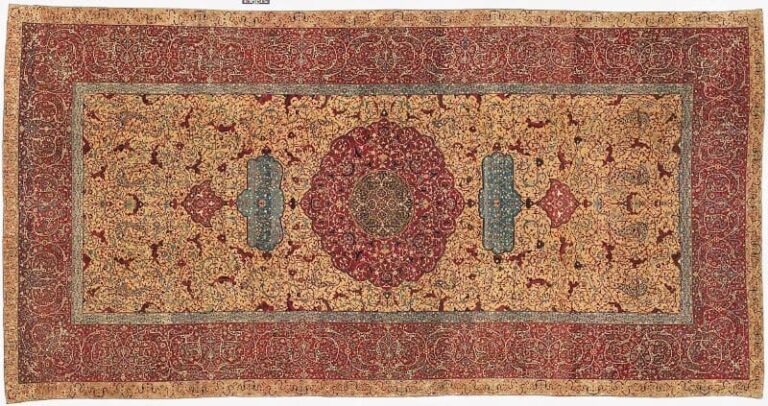
The Benefits of Wool Persian Rugs
The materials used to make 100% hand-knotted rugs are all-natural plant & animal fibers, like silk, wool, and cotton. The practical benefit of choosing a 100% hand-knotted rug is its materials.
Wool has numerous advantages when used in the pile of a rug. Wool rugs are highly durable. The pile is thick, strong, and tough. It feels soft and comfortable to walk on, and it is a sturdy material resistant to stains, making it low maintenance. Wool has natural properties such as insulation and temperature regulation. And because wool is hypoallergenic and anti-bacterial, it’s a good choice for people with allergies.
Wool can absorb dye and retain its color, which helps the rug stay vibrant and colorful which makes a Persian or Oriental wool rug last for thousands of years.
Fine Persian rugs are not only a reflection of the rich cultural heritage of Persia, but they also serve as an investment in a piece of history, offering unparalleled beauty and craftsmanship to any space.
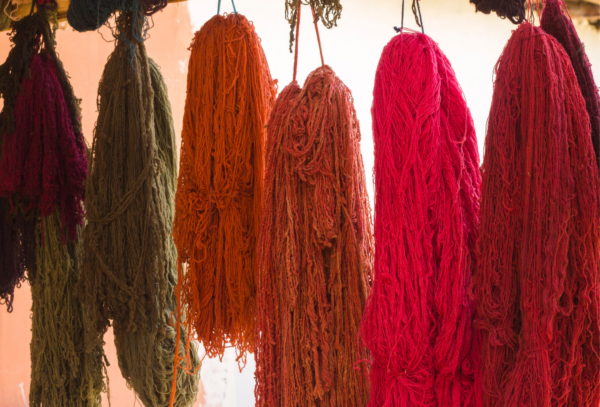
The Production Process of Wool Rugs
1. Shearing the wool: The first step in the production process is obtaining the wool from sheep through shearing. The thread is then sorted and selected based on quality and color.
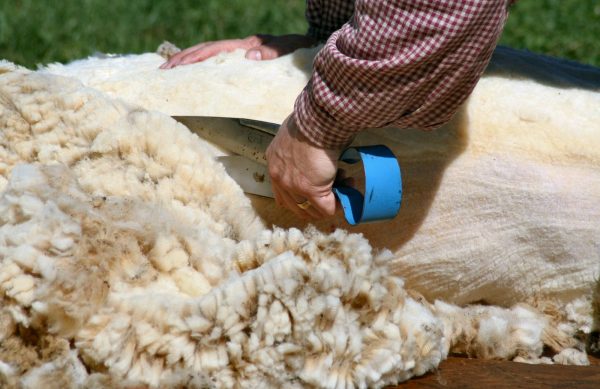
2. Washing and carding the wool: The wool gets cleaned through scouring to remove dirt and impurities. Then it gets treated with a chemical process called carbonizing to soften and whiten the fibers. The wool threads are then run through carding machines to align the fibers and remove any remaining impurities.
3. Spinning and plying the wool yarn: The cleaned and carded wool is spun into yarn using a spinning wheel or machine. The spun yarn is plied or twisted together to create a more robust and durable thread.
4. Dyeing the wool yarn: The yarn is dyed using natural or synthetic dyes, depending on the desired color and effect.

5. Knotting the rug: The dyed yarn is used to knot the rug using either the Turkish knot or the Persian knot. The knotter works with a pattern and design in mind, carefully weaving the yarn to create the desired pattern and color scheme.
6. Finishing the rug: Once the knotting is complete, the rug is sheared to even out the surface and give it a uniform appearance. It is then washed and trimmed as needed to remove any excess fibers and ensure a clean and finished look. Quality control measures are applied to ensure that the finished rug meets high-quality standards.
The Types of Wool Oriental Rugs
Wool Oriental rugs come in various styles and patterns, including tribal, floral, and geometric designs. These rugs can be made by tribes, in villages, or cities.
Tribal wool Persian rugs are made by specific tribes and include styles such as Baluchi, Turkomen, and Qashqai.
Village wool Persian rugs are made in villages and include styles such as Heriz, Bakhtiari, Abadeh, Karaja, and Azerbaijan.
City, or traditional, Persian wool rugs are often made in workshops and include styles such as Tabriz, Kashan, Kerman, Nain, Isfahan, and Hamadan. Some of these workshops are famous for their high-quality rugs.
In terms of design, wool Persian rugs often feature floral, geometrical, and Herati patterns. These designs can come in a medallion with a four-corner pattern or allover.
Other designs include pictorial design, garden panels, boteh, prayer, vase, and tree of life design. With such a wide range of styles and designs, there is a wool Persian rug for every taste and preference.
Factors that Determine the Quality of Wool
The quality of wool can vary significantly depending on several factors, including the type of food the sheep graze on, the elevation where they live, and the season in which the wool is sheared.
One factor that can impact the quality of wool is the type of food the sheep consume. Sheep that are fed a nutritious diet will produce wool that is of a higher quality than those that are not. For example, sheep that are fed a diet of high-quality grasses and grains will have wool that is more lustrous and softer than those that are fed a lower-quality diet.
The sheep’s elevation can also affect the quality of their wool. Sheep that live at higher elevations, such as in the mountains, will typically have thicker and more oily wool. This is because the colder temperatures at higher elevations can cause the sheep’s wool to grow thicker and more densely to provide insulation against the cold.
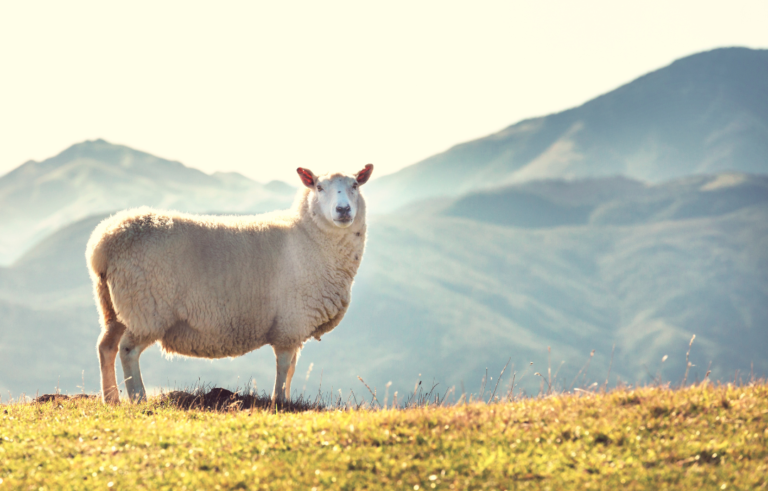
The season in which the wool is sheared can also impact its quality. Generally, spring is considered the best time to shear wool, as the wool is at its most lustrous and soft at this time. Wool that is sheared during other seasons may be of lower quality.
Another factor that can impact the quality of wool is how it is spun. Handspun wool is typically softer and more lustrous than wool that has been machine spun. This is because the fibers in handspun wool are not subjected to the same level of mechanical stress and strain as those in machine-spun wool.
On the other hand, wool from a dead sheep is generally of lower quality. This wool is typically very dry and broken and is often used for cheap rugs and low-quality textiles.
Some of the best and most popular types of wool used in producing Persian rugs include Manchester wool, New Zealand wool, and Ghazni wool. These types of wool are known for their softness, shine, and durability, and rug makers and consumers alike highly prize them.
Caring for Your Oriental Wool Rugs
When caring for your wool Persian rug, there are a few key things you can do to ensure it stays in pristine condition.
Here are four tips to help you keep your rug looking beautiful for years to come:
1. Regular vacuuming and rotation: One of the most effective ways to care for your wool Persian rug is to vacuum it regularly to remove dirt and debris that can accumulate in the fibers. It’s also a good idea to rotate your rug every few months to prevent fading or uneven wear in high-traffic areas.
2. Protect from direct sunlight and heavy furniture: To prevent fading, keep your wool Persian rug out of direct sunlight. If you can’t avoid placing your rug in a sunny area, consider using window treatments to filter the light. Additionally, try to avoid placing heavy furniture on your rug, as it can cause the fibers to become flattened over time.
3. Clean up stains immediately: If you spill something on your wool Persian rug, it’s essential to act quickly to prevent the stain from setting in. Use a clean, damp cloth to gently blot the stain and absorb as much of the liquid as possible. Avoid rubbing the stain, as this can cause it to spread or become more difficult to remove.
4. Use professional rug cleaning if needed: Regular vacuuming and spot cleaning can help keep your wool Persian rug looking fresh. It’s a good idea to have it professionally cleaned every few years to deep clean the fibers and remove any stubborn stains.
A professional rug cleaner will have the expertise and equipment to effectively care for your rug, ensuring it looks its best for years to come.
Following these simple care tips, you can help keep your wool Persian rug looking beautiful and preserve it for future generations.
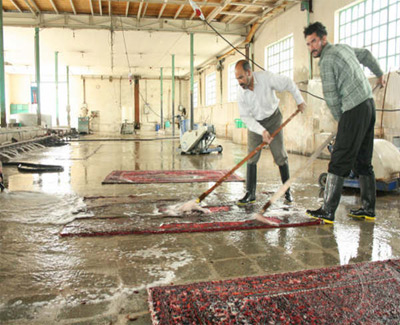
Related Categories
Persian Rugs | Silk and Wool Rugs | Wool Runner | Small Wool Rugs | 8 x 10 Wool Rugs | Large Wool Rugs | 9 x 12 Wool Rugs